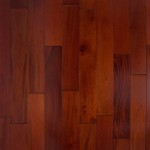Understanding Laminate Floor Thickness In Detail
Laminate flooring has emerged as a popular and cost-effective alternative to hardwood, tile, and stone flooring. Its affordability, durability, and ease of installation make it a suitable choice for various residential and commercial applications. One crucial aspect of laminate flooring that significantly impacts its performance and longevity is its thickness. This article provides a detailed understanding of laminate floor thickness, exploring its different measurements, factors influencing the choice of thickness, and the benefits associated with varying thicknesses.
Laminate flooring consists of multiple layers bonded together. Understanding these layers is essential to appreciating the role of overall thickness. Typically, a laminate floorboard comprises four primary layers: the wear layer, the decorative layer, the core layer, and the backing layer.
The wear layer is the topmost, transparent layer that protects the flooring from scratches, stains, fading, and general wear and tear. This layer is typically composed of aluminum oxide or melamine resin. The decorative layer is a high-resolution photographic image that mimics the appearance of real wood, stone, or tile. It is this layer that provides the aesthetic appeal of the laminate. The core layer provides the flooring with its structural integrity and resistance to moisture. It is usually made of high-density fiberboard (HDF) or medium-density fiberboard (MDF). Finally, the backing layer is the bottom layer that provides stability and support to the flooring, preventing warping and moisture penetration from the subfloor.
The collective thickness of these layers determines the overall thickness of the laminate flooring plank, usually measured in millimeters (mm). Commonly available laminate flooring thicknesses range from 6mm to 12mm, although thicker options may be available in specialized applications.
Key Considerations Affecting Laminate Floor Thickness Selection
Selecting the appropriate laminate floor thickness is crucial for ensuring optimal performance and longevity. Several factors should be considered before making a decision. These factors include foot traffic, subfloor condition, sound insulation requirements, and budget considerations.
Foot traffic is a primary determinant of the required laminate floor thickness. Areas with high foot traffic, such as hallways, living rooms, and commercial spaces, necessitate thicker laminate flooring to withstand the increased wear and tear. Thicker laminates generally offer better resistance to indentation and abrasion, ensuring the floor's aesthetic appeal remains intact for a longer period. Thinner laminates, on the other hand, may be suitable for areas with light foot traffic, such as bedrooms or guest rooms.
The condition of the subfloor beneath the laminate flooring is another crucial consideration. A level and stable subfloor is essential for ensuring the proper installation and performance of the laminate floor. However, if the subfloor is uneven or has minor imperfections, a thicker laminate can help to bridge these irregularities and create a more even surface. Thicker laminates tend to be more rigid and less prone to flexing over uneven surfaces, resulting in a more stable and comfortable walking surface. In cases where the subfloor is severely uneven, it may be necessary to level it before installing the laminate flooring, regardless of its thickness.
Sound insulation is another factor that influences the choice of laminate floor thickness. Thicker laminates generally provide better sound insulation properties compared to thinner laminates. The denser core layer of thicker laminates helps to absorb and dampen sound vibrations, reducing noise transmission between floors. This can be particularly important in multi-story buildings or apartments where noise reduction is a key consideration. If sound insulation is a primary concern, it is advisable to choose a thicker laminate flooring option or consider installing an underlayment specifically designed for sound dampening purposes.
Budget constraints inevitably play a role in the selection of laminate floor thickness. Thicker laminates typically cost more than thinner laminates due to the increased material and manufacturing costs. It is important to balance the desired performance characteristics with the available budget. In certain situations, it may be possible to opt for a thinner laminate with a high-quality underlayment to achieve a similar level of performance at a lower cost. Careful consideration of the budget and desired performance characteristics will help to determine the most appropriate laminate floor thickness for the specific application.
Benefits Associated with Varying Laminate Floor Thicknesses
Different laminate floor thicknesses offer distinct benefits that cater to various needs and applications. Understanding these benefits is crucial for making an informed decision and selecting the optimal thickness for a given project.
Thinner laminate flooring, typically ranging from 6mm to 8mm, is often chosen for its affordability and ease of installation. These thinner laminates are generally less expensive than their thicker counterparts, making them an attractive option for budget-conscious consumers. Furthermore, thinner laminates are typically lighter and easier to handle, simplifying the installation process. They are also well-suited for installations over existing flooring, as their lower profile minimizes the height difference between the new and existing floor surfaces. However, it is important to note that thinner laminates may be less durable and less resistant to moisture and indentation compared to thicker laminates.
Medium-thickness laminate flooring, typically ranging from 8mm to 10mm, provides a balance between affordability and performance. These laminates offer improved durability and resistance to wear and tear compared to thinner laminates, making them suitable for moderate foot traffic areas. They also provide better sound insulation and are more forgiving of minor subfloor imperfections. Medium-thickness laminates represent a versatile option for a wide range of residential and light commercial applications.
Thicker laminate flooring, typically ranging from 10mm to 12mm or more, offers the highest level of durability, stability, and sound insulation. These laminates are designed to withstand heavy foot traffic and are ideal for high-traffic areas such as hallways, living rooms, and commercial spaces. Thicker laminates are also more resistant to moisture and indentation, ensuring the floor's aesthetic appeal remains intact for a longer period. The increased thickness provides enhanced stability, making them less prone to flexing and warping. While thicker laminates are generally more expensive than thinner options, their superior performance and longevity make them a worthwhile investment for demanding applications.
Installation Considerations and Underlayment
Regardless of the chosen laminate floor thickness, proper installation is crucial for ensuring optimal performance and longevity. It is essential to follow the manufacturer's instructions carefully and prepare the subfloor properly. A level and clean subfloor is essential for a successful installation. Any imperfections or irregularities in the subfloor should be addressed before installing the laminate flooring.
The use of an underlayment is highly recommended for all laminate flooring installations. An underlayment is a thin layer of material that is installed between the subfloor and the laminate flooring. It provides a number of benefits, including improved sound insulation, moisture resistance, and cushioning. The type of underlayment used should be appropriate for the specific application and the type of subfloor. Different types of underlayment are available, including foam, cork, and rubber. The thickness of the underlayment can also vary, depending on the desired level of sound insulation and cushioning.
When installing laminate flooring, it is important to leave an expansion gap around the perimeter of the room. This gap allows the flooring to expand and contract with changes in temperature and humidity. Without an expansion gap, the flooring may buckle or warp. The size of the expansion gap should be specified by the manufacturer.
In summary, the thickness of laminate flooring is a critical factor that significantly impacts its performance, durability, and suitability for various applications. Factors such as foot traffic, subfloor condition, sound insulation requirements, and budget considerations should be carefully evaluated when selecting the appropriate thickness. Thinner laminates offer affordability and ease of installation, while thicker laminates provide superior durability, stability, and sound insulation. Proper installation and the use of an underlayment are essential for ensuring optimal performance and longevity. Understanding the nuances of laminate floor thickness empowers consumers to make informed decisions and choose the most appropriate flooring solution for their specific needs.

Laminate Flooring Thickness Guide Blog Floorsave

12mm Laminate Flooring What You Need To Know

Laminate Flooring 50 Off Free Samples Dfd

Laminate Flooring Thickness The 2024 Simple Easy Guide Carpet Captain

The Ultimate Guide To Laminate Flooring Thickness Surya

Optimal Thickness For Laminate Flooring Karma
Laminate Flooring Thickness Guide All You Need To Know Learning Centerlearning Center

Optimal Thickness For Laminate Flooring Karma

What Is The Normal Thickness Of Flooring Wood And Beyond Blog
Laminate Flooring Thickness Guide All You Need To Know Learning Centerlearning Center
Related Posts








